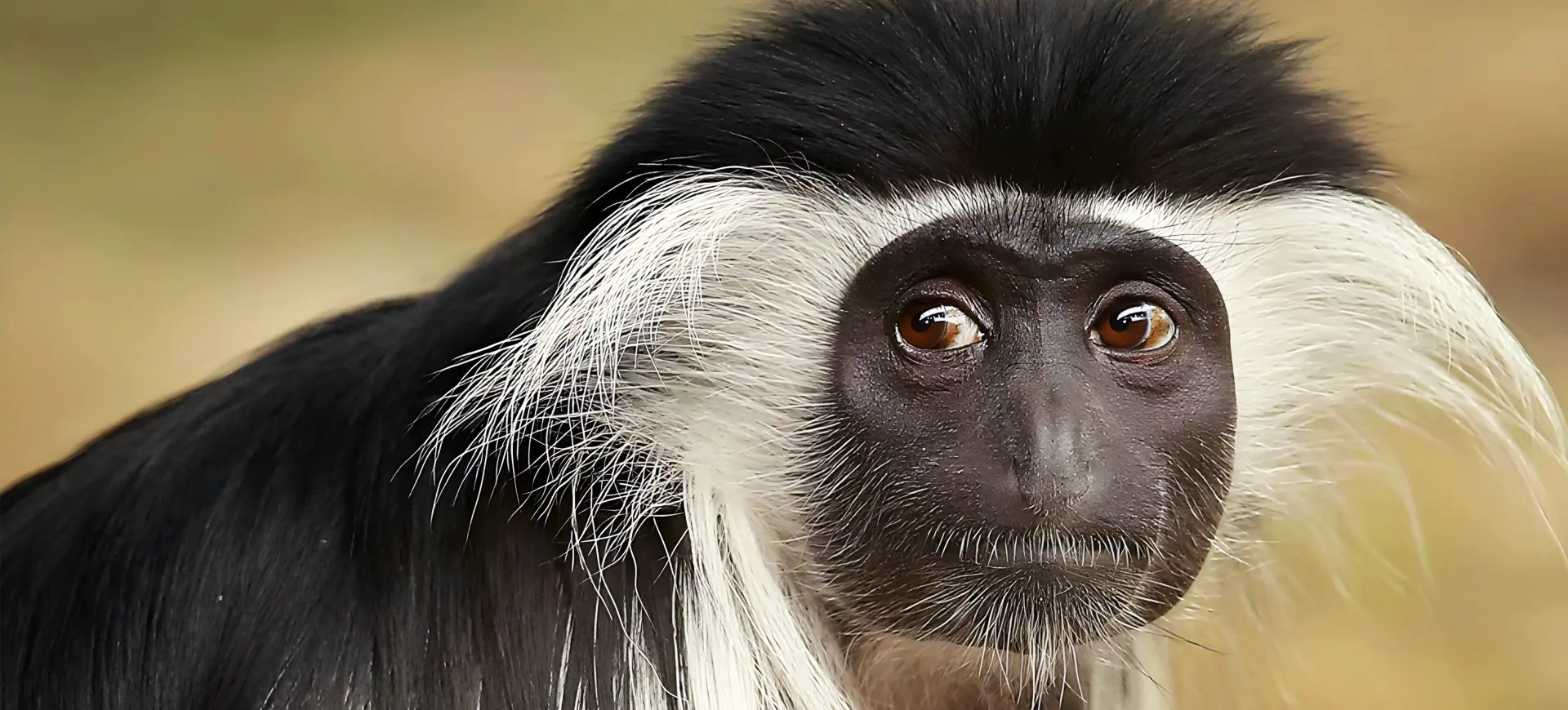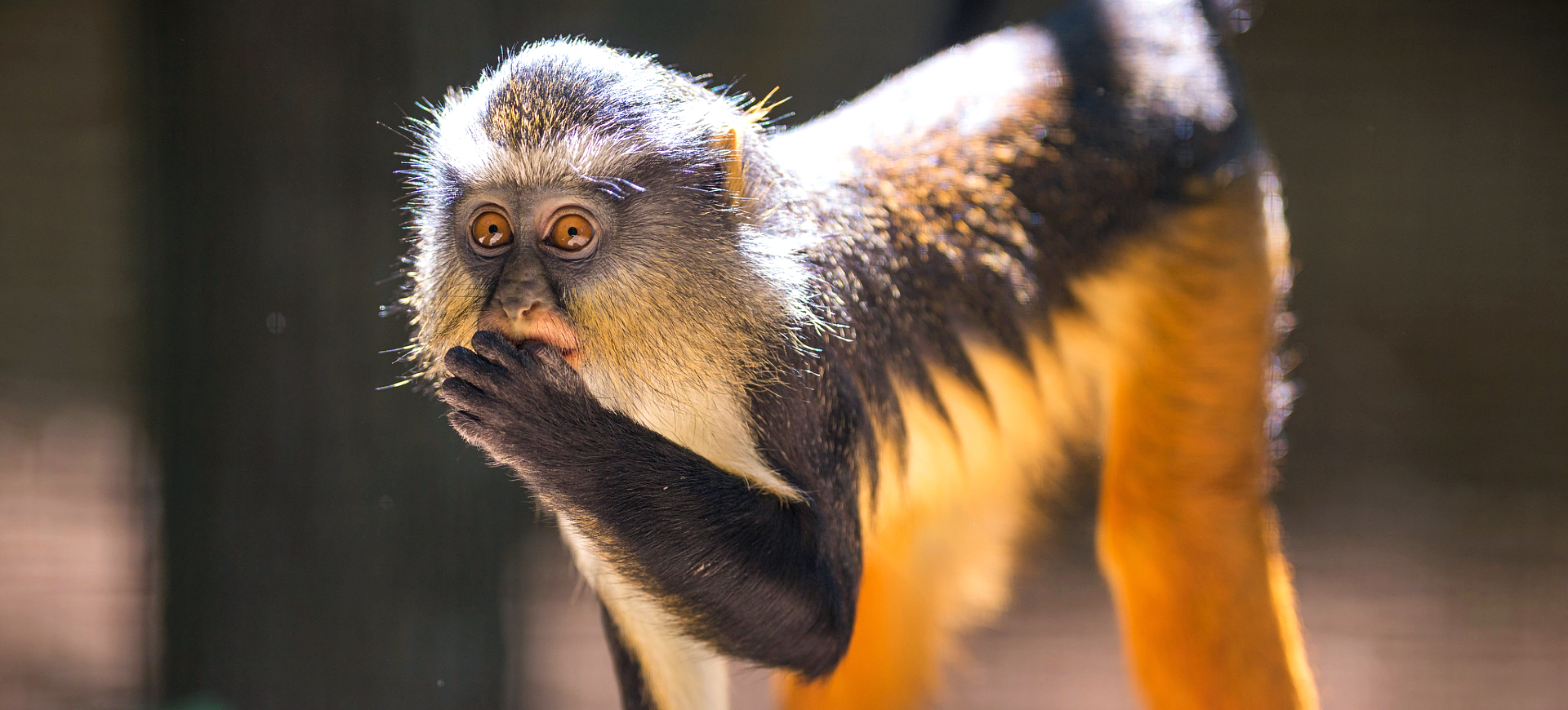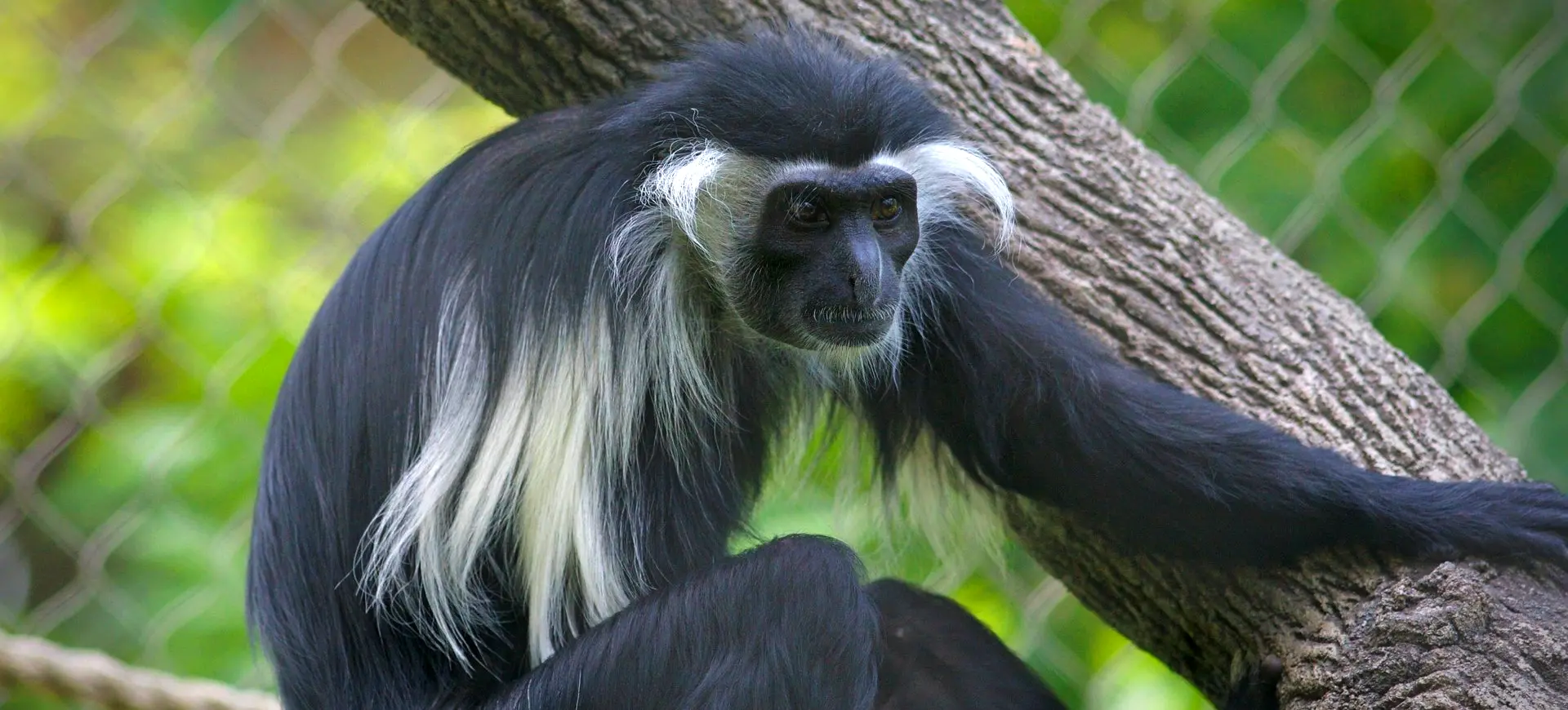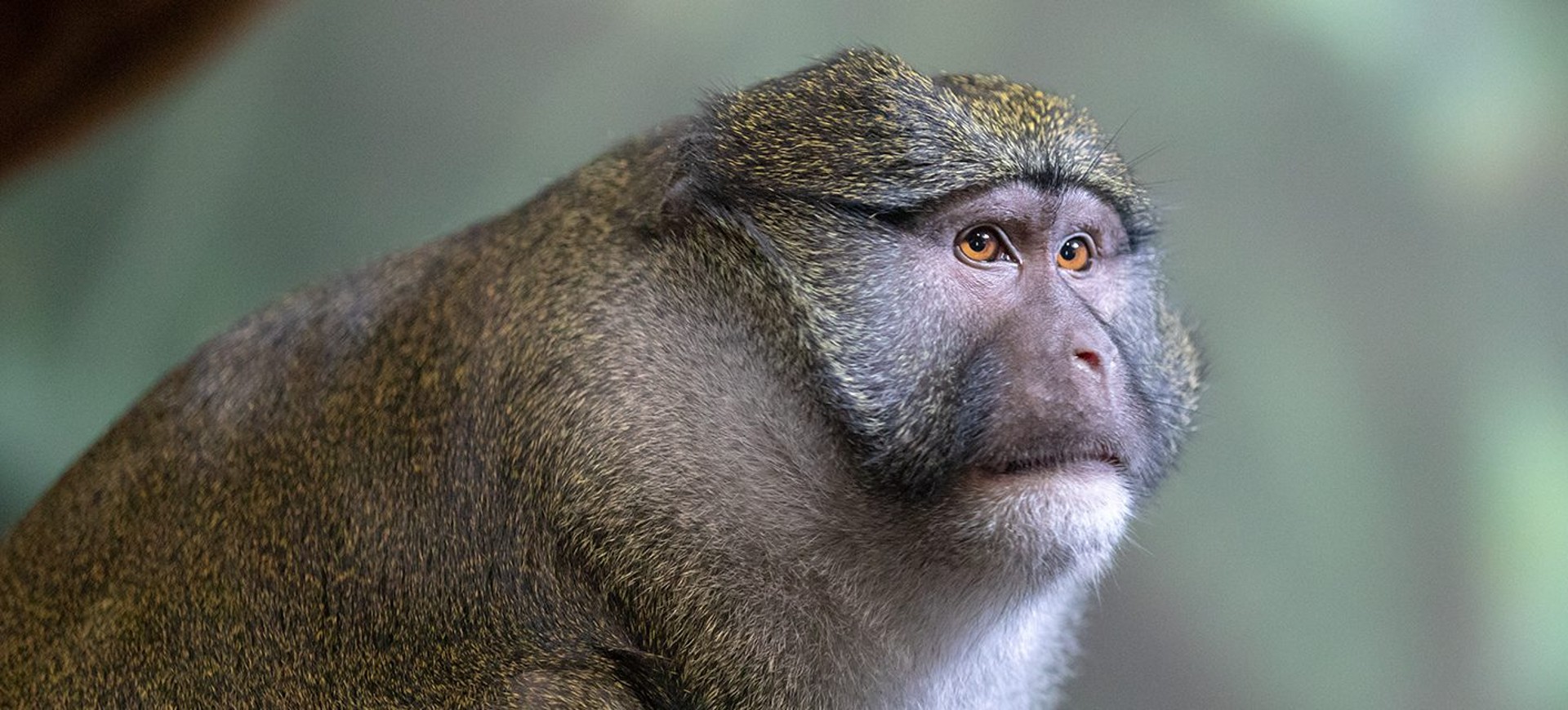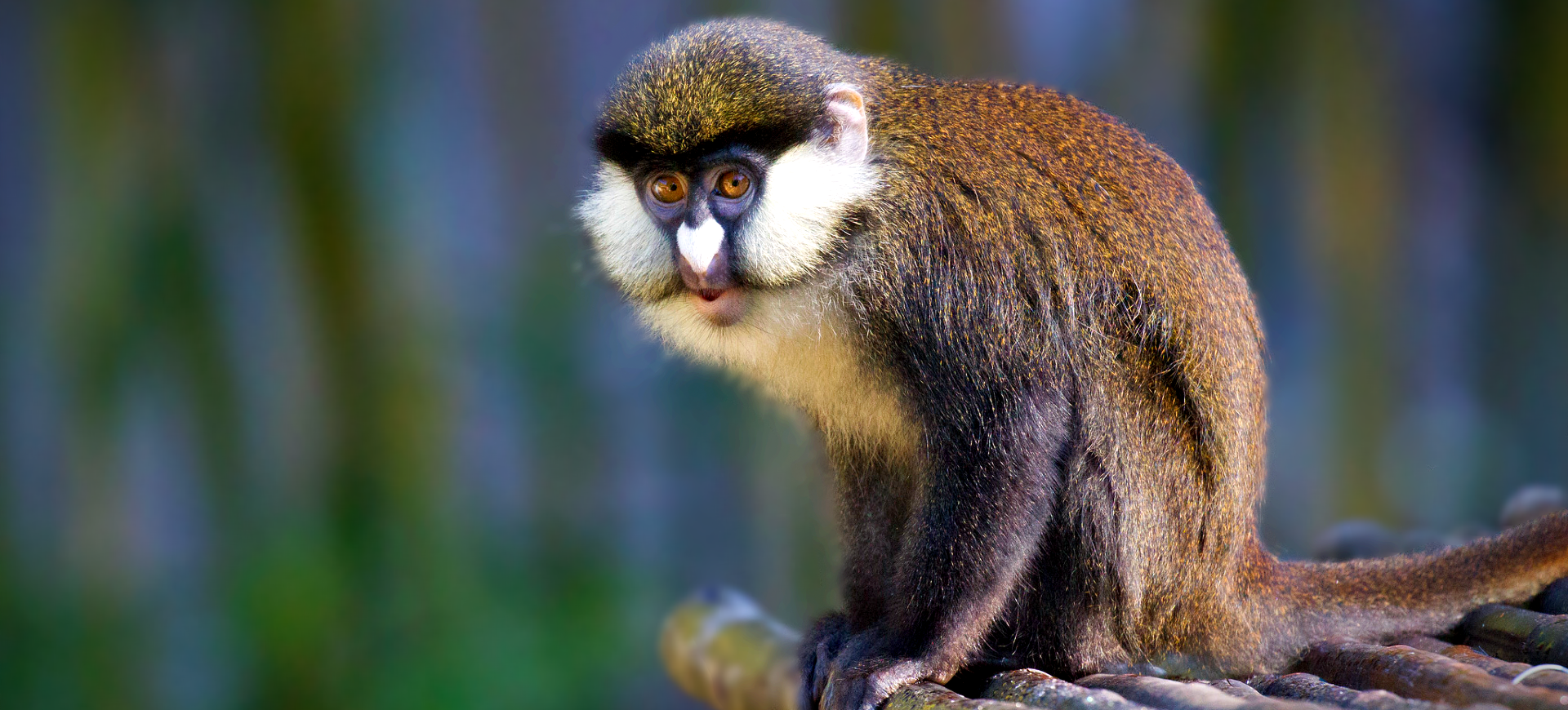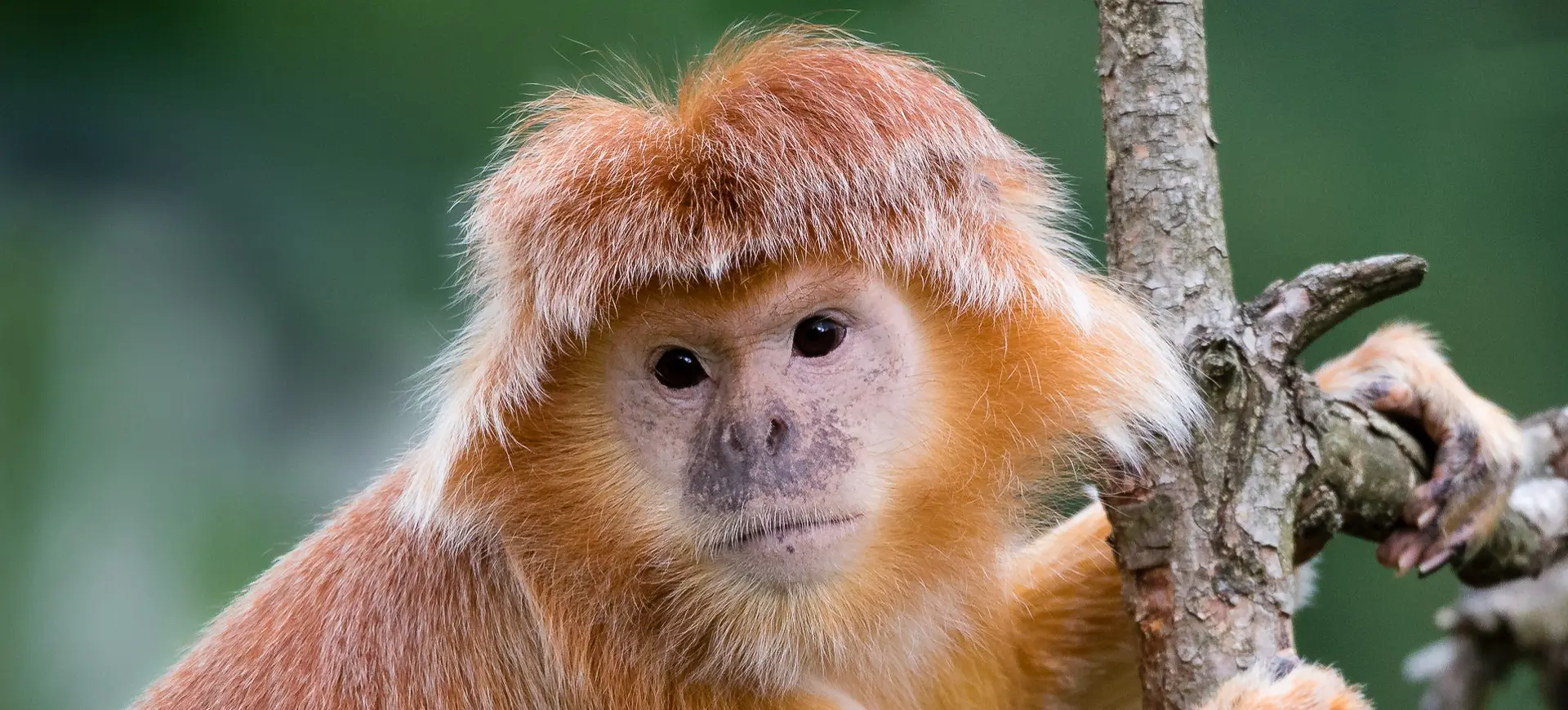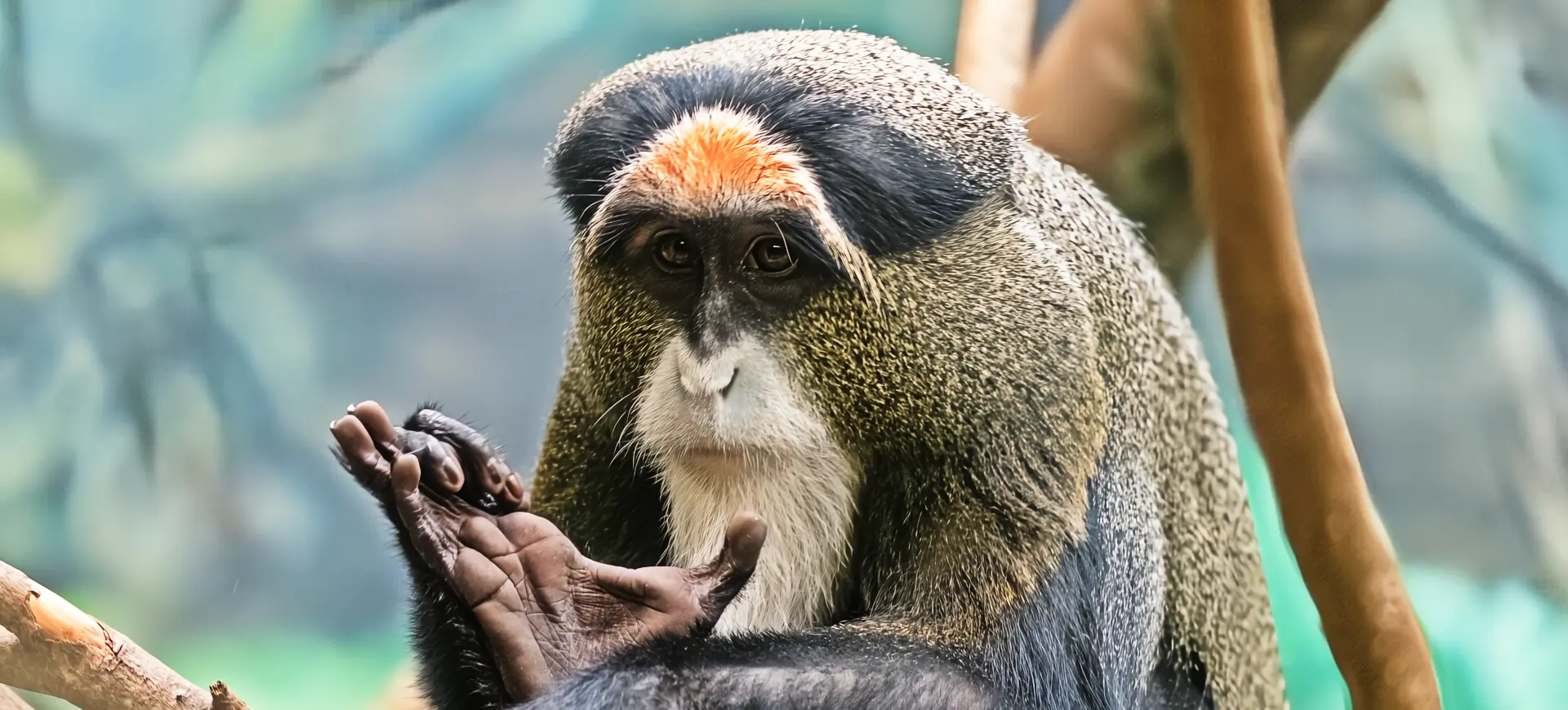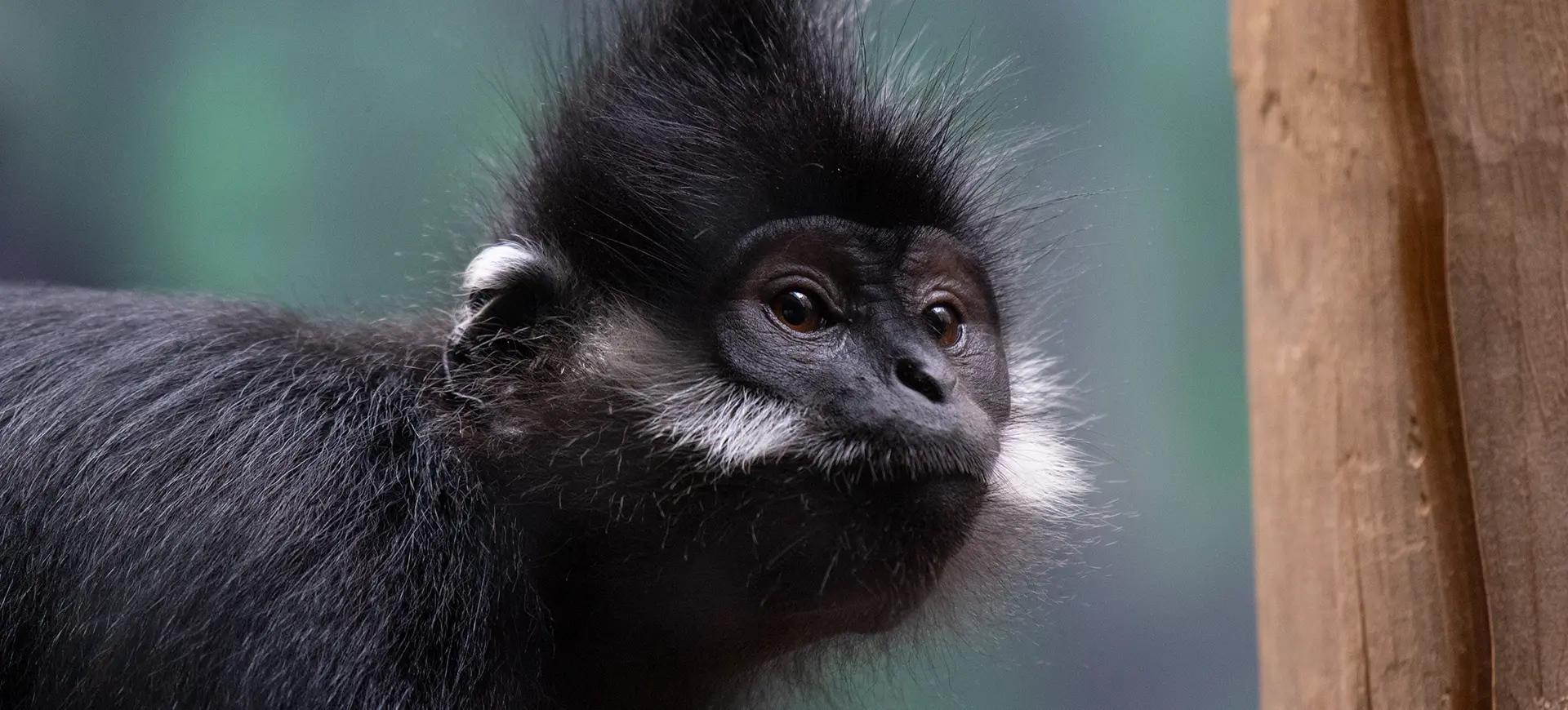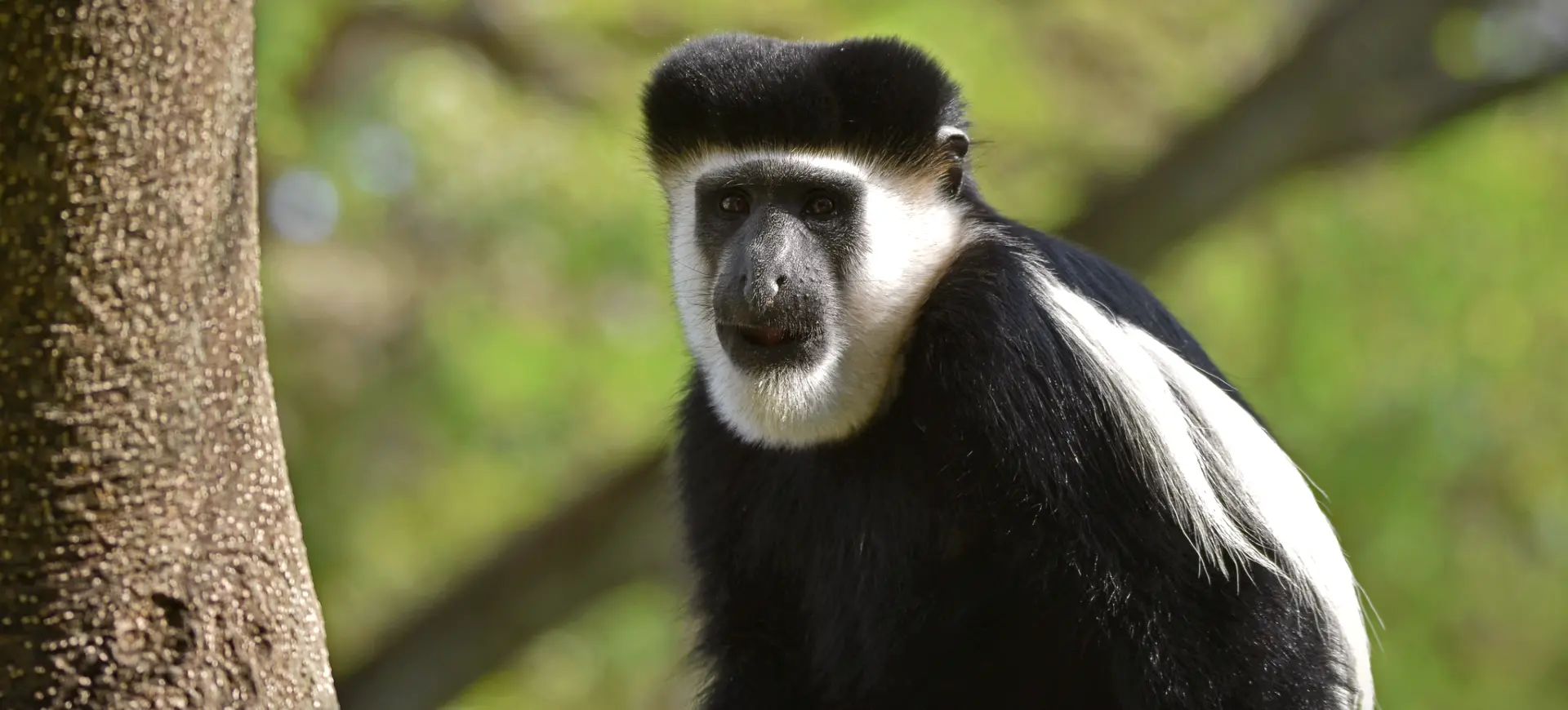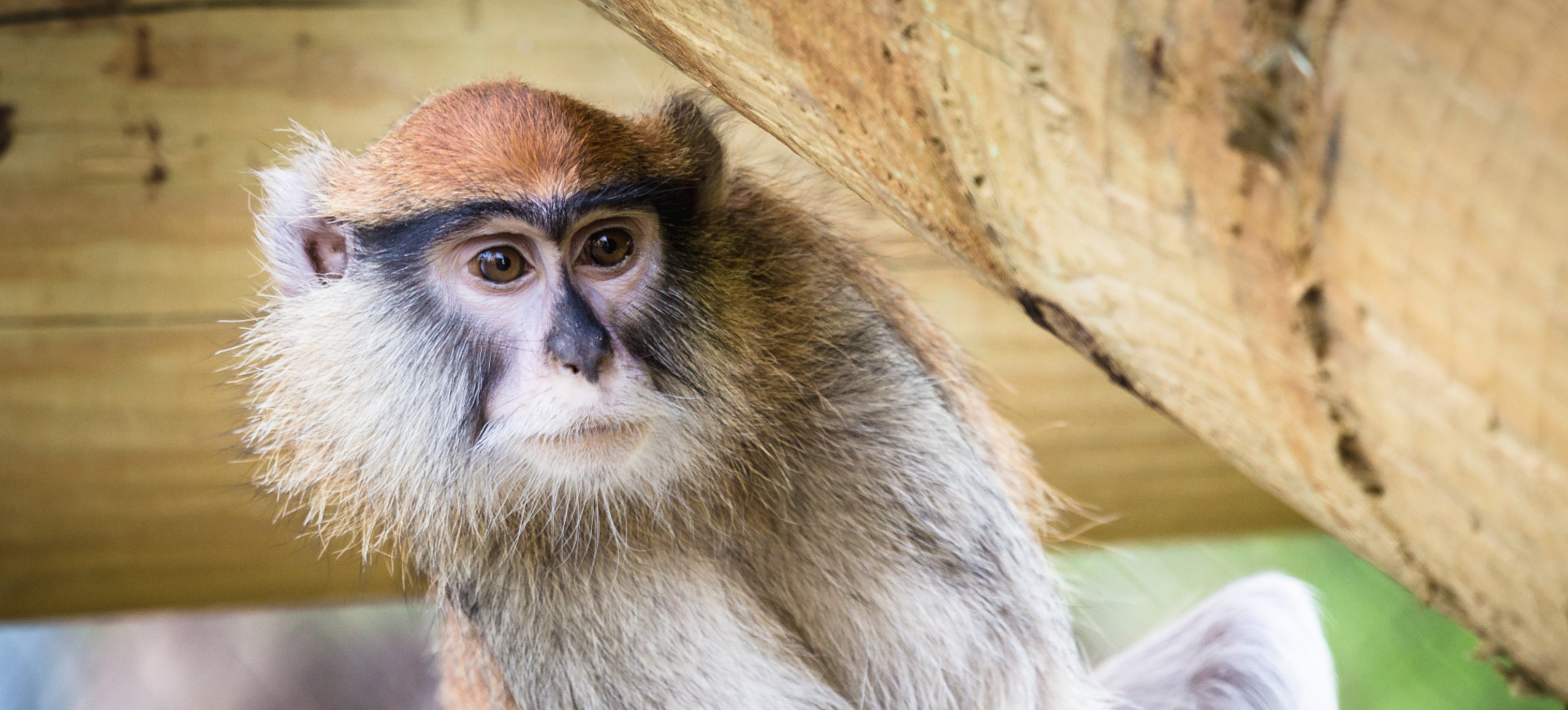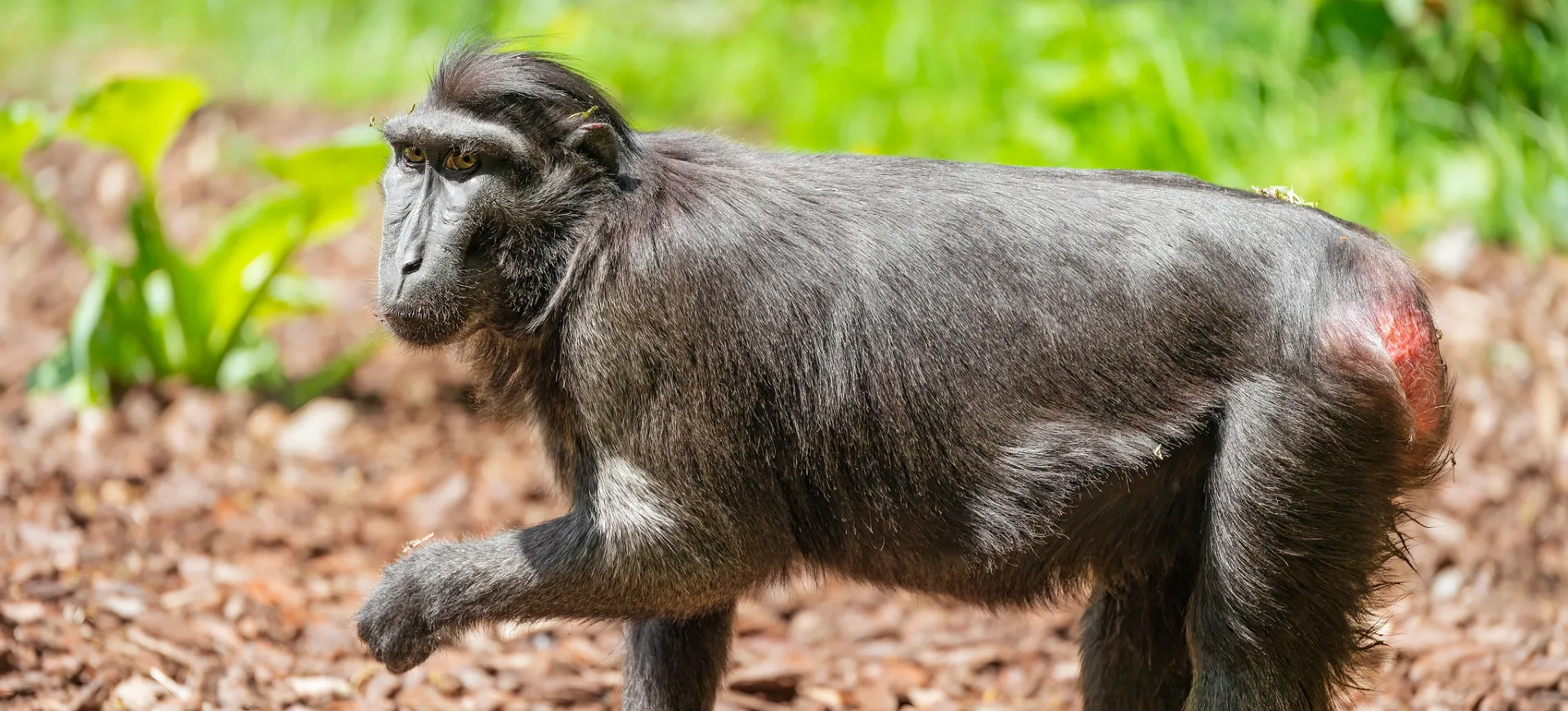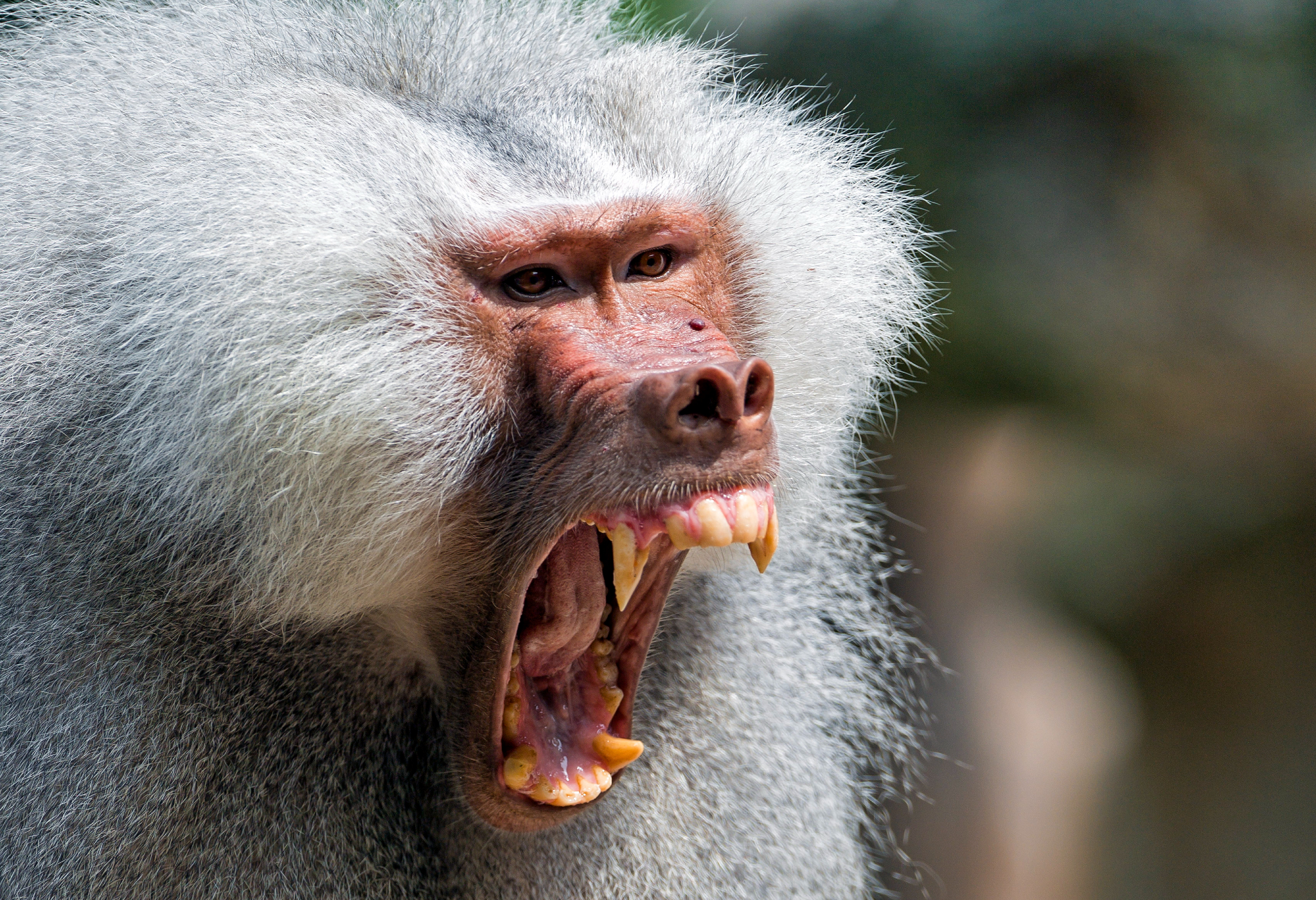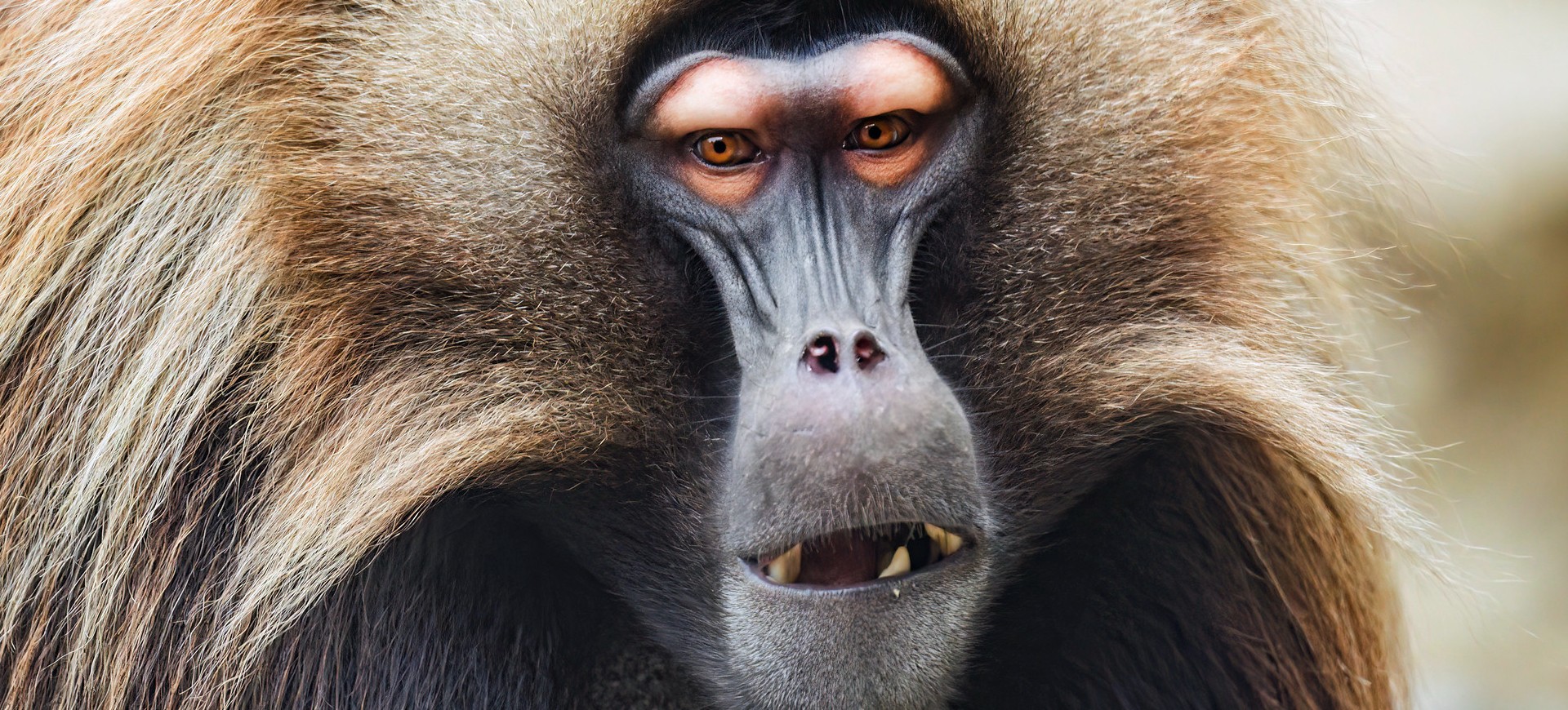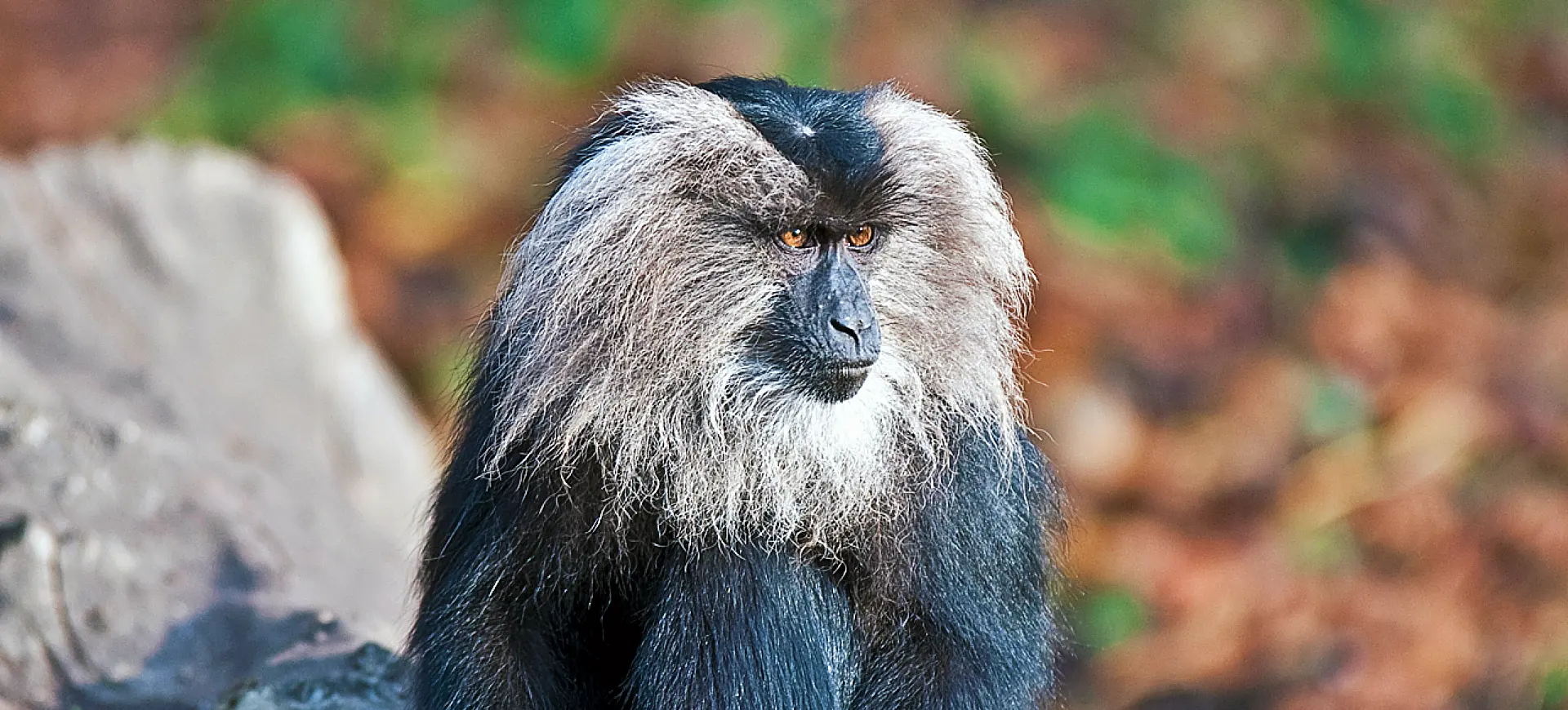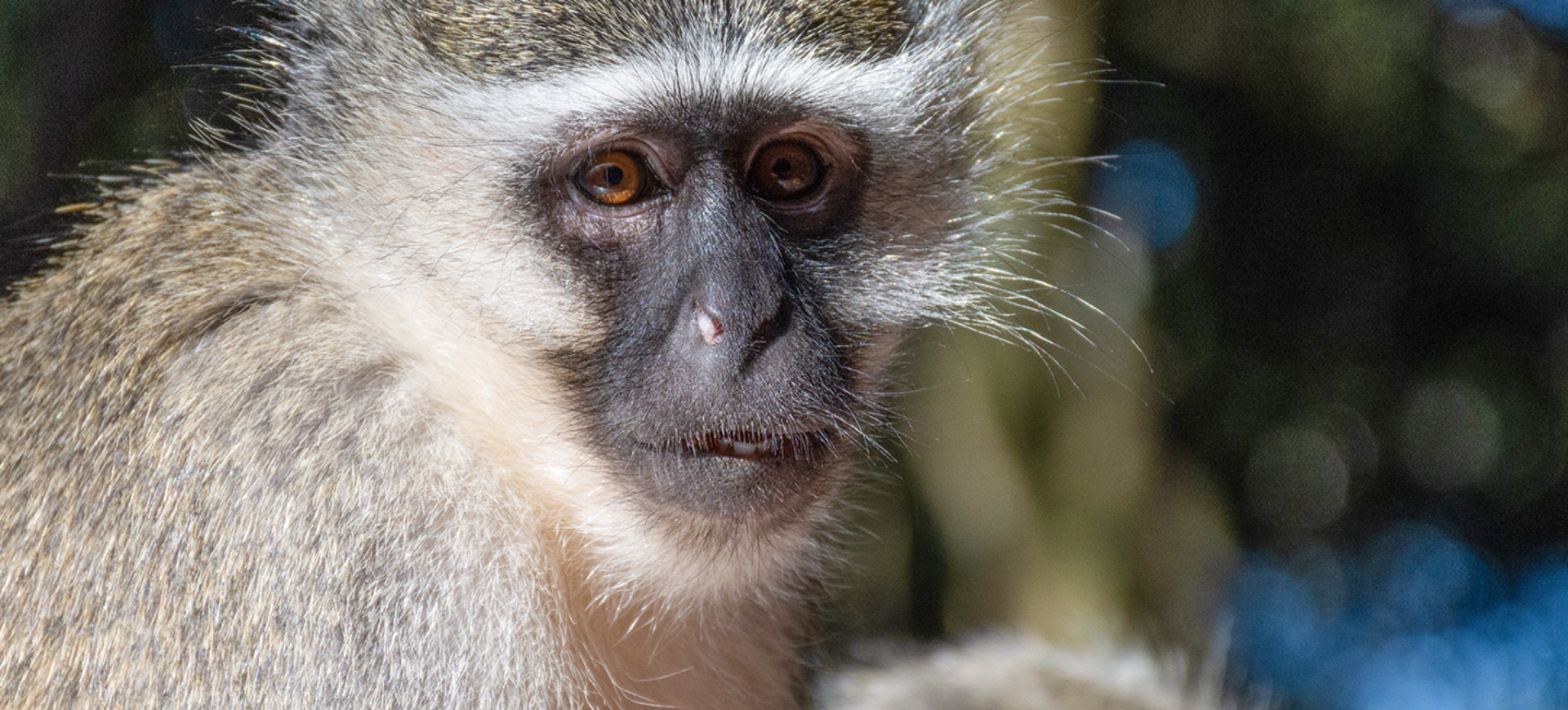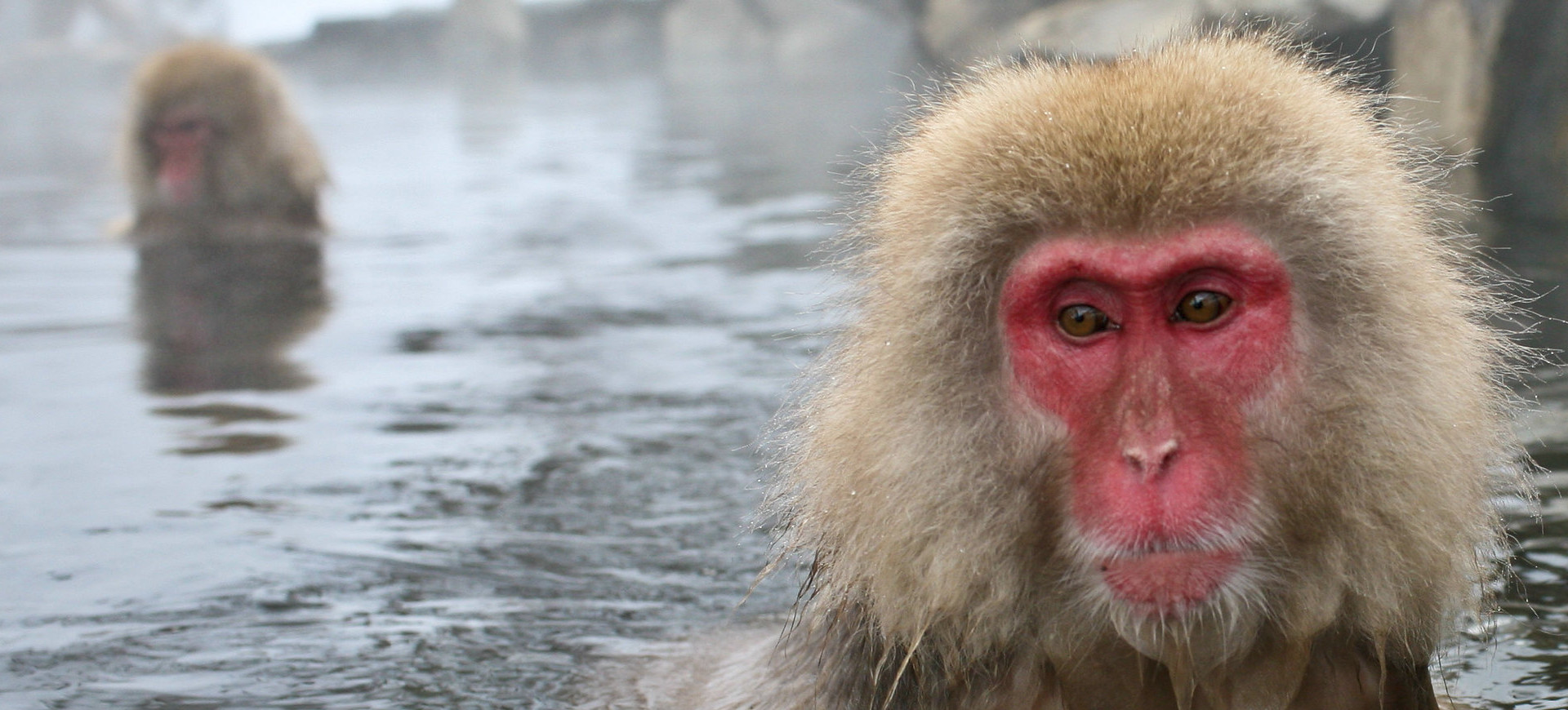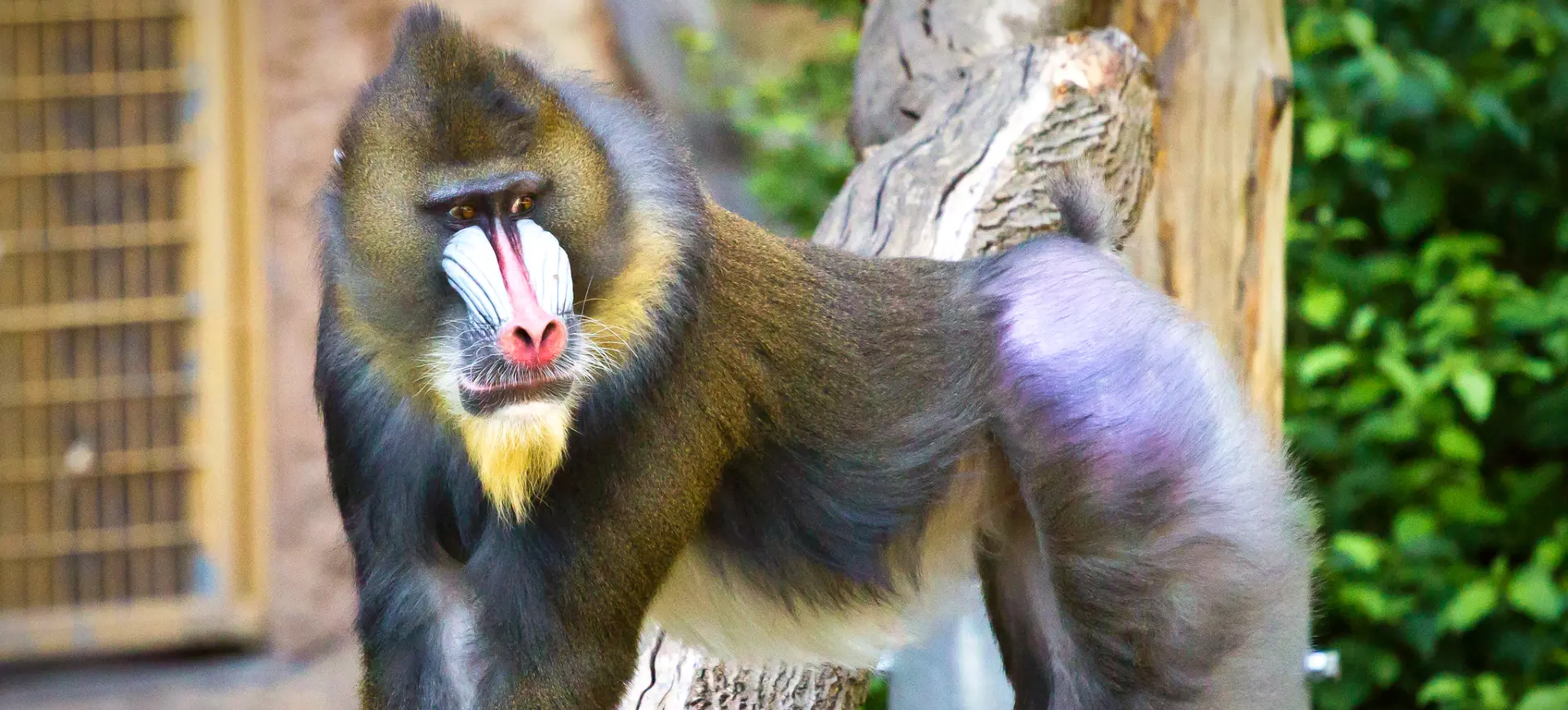Overview
Schmidt’s Red-tailed Monkey, scientifically known as Cercopithecus Ascanius schmidti, is a subspecies of the Red-tailed Monkey found predominantly in East Africa. Characterized by its distinctive red tail and playful demeanor, it inhabits the dense rainforests of the region. The monkey’s coat is primarily grey and olive, with a whitish underbelly and a striking black face surrounded by white fur. Its most notable feature is the long, bushy red tail, often longer than the body.
These monkeys are arboreal, spending most of their time in the treetops. Their slender bodies and long limbs are well-adapted for an agile life among the branches. They are diurnal and highly social animals, living in groups that a dominant male typically leads. Communication within these groups is complex, involving a variety of vocalizations, facial expressions, and body postures.
Schmidt’s Red-tailed Monkeys are omnivorous, with a predominantly frugivorous diet. They play an important ecological role as seed dispersers due to their fruit-heavy diet. Besides fruits, their diet includes leaves, flowers, and insects. Their cheek pouches allow them to store food and eat it later, an advantageous adaptation in their competitive forest environment.
Taxonomy
Kingdom
Phylum
Class
Order
Family
Genus
Species
Sub Species
Type
Physical Description:
Schmidt’s Red-tailed Monkey is notable for its small to medium size and slender build. Adult males are larger than females, typically weighing 7 and 12 pounds (3 and 5.5 kilograms). The body length ranges from approximately 18 to 26 inches (45 to 65 centimeters), with the tail adding 24 to 35 inches (60 to 90 centimeters). The tail is bushy and vividly red, contrasting with the grey and olive fur of the body.
The monkey’s face is black, with distinctive white fur framing it, creating a striking appearance. Their cheeks have prominent white patches above the eyes, and large cheek pouches are visible. The hands and feet are nimble and suited for an arboreal lifestyle. The overall coloration and body structure make them well-adapted to the forest canopy, providing camouflage and agility.

Lifespan: Wild: ~20 Years || Captivity: ~25 Years

Weight: Male: 7-12 lbs (3-5.5 kg) || Female: 5.5-7 lbs (2.5-3.2 kg)

Length: Male & Female: 24-35 inches (60-90 cm)
Characteristic:
Native Habitat:
Schmidt’s Red-tailed Monkey inhabits the tropical rainforests of East Africa. Its range includes Uganda, Rwanda, Burundi, and the eastern part of the Democratic Republic of Congo. These monkeys are typically found in primary and secondary forests, preferring areas with dense canopy cover. They are adapted to live in both lowland and montane forests.
Their habitat provides ample food sources and protection from predators. The dense forest canopy allows these arboreal monkeys to forage for food. They are rarely found on the ground, preferring the safety and resources available in the treetops.
Climate Zones:
Biomes:
WWF Biomes:
Biogeographical Realms:
Continents:
Diet:
Diet & Feeding Habits:
Schmidt’s Red-tailed Monkey is primarily frugivorous, with fruits making up the bulk of its diet. The monkey favors ripe fruits, and its dietary habits contribute significantly to seed dispersal in the forest. In addition to fruits, their diet includes leaves, flowers, and various insects, providing a balanced intake of nutrients. Occasionally, they may also consume small vertebrates.
Their cheek pouches enable them to gather food quickly and consume it later, which helps avoid predation while foraging. These monkeys are known to be opportunistic feeders, often exploring different food sources. They play a key role in their ecosystem by aiding in the regeneration of forest areas through seed dispersal.
Mating Behavior:
Mating Description:
Schmidt’s Red-tailed Monkey exhibits a polygynous mating system, where a single dominant male mates with multiple females in the group. Males compete for dominance, with the alpha male having exclusive mating rights with the females. The breeding season is not strictly defined, with births occurring yearly. Courtship involves grooming and vocalizations, and females show sexual swelling to signal receptivity.
A single offspring is typically born after a gestation period of about five months. Mothers are the primary caregivers, and infants depend on them for nourishment and protection. The troop’s social structure supports the young, with other females and juveniles sometimes assisting in caring for the infants. This cooperative care aids in the development and survival of the young monkeys.
Reproduction Season:
Birth Type:
Pregnancy Duration:
Female Name:
Male Name:
Baby Name:
Social Structure Description:
Schmidt’s Red-tailed Monkeys live in social groups typically comprising one dominant male, multiple females, and their offspring. These groups can range from small family units to larger troops of up to 30 individuals. The social hierarchy within the group is well-defined, with a dominant male leading and females forming the core of the group.
Social interactions include grooming, playing, and vocal communication. Grooming plays a significant role in social bonding and maintaining group harmony. The group protects predators and is essential for the social development of juveniles. These monkeys are known for their playful behavior, which helps in social bonding and learning among young individuals.
Groups:
Conservation Status:
Population Trend:
While the exact population numbers of Schmidt’s Red-tailed Monkey are unknown, the subspecies are generally considered stable in protected areas. However, their numbers are declining in regions where habitat destruction and hunting are prevalent. They are vulnerable to deforestation, which leads to habitat fragmentation and loss. In some areas, they are also hunted for bushmeat, posing an additional threat.
Conservation efforts in national parks and reserves have been crucial in maintaining healthy populations. These efforts include habitat protection, anti-poaching measures, and community education programs. Despite challenges, Schmidt’s Red-tailed Monkeys’ adaptability to various forest habitats has helped them survive in changing environments.
Population Threats:
The primary threats to Schmidt’s Red-tailed Monkey include habitat loss due to deforestation for agriculture and human settlement. Logging and land conversion have led to significant habitat fragmentation. Bushmeat hunting is also a serious threat in some areas, along with the illegal wildlife trade. These activities not only reduce their numbers but also disrupt the social structure of their groups.
Additionally, they sometimes conflict with humans when they raid crops, leading to retaliatory killing. The impact of climate change on their forest habitat is another emerging concern, potentially affecting food availability and habitat conditions.
Conservation Efforts:
Conservation efforts for Schmidt’s Red-tailed Monkey focus on habitat protection and reducing hunting pressures. Efforts include establishing and managing protected areas, law enforcement to combat poaching and illegal trade, and community-based conservation programs. Educating local communities about the ecological role and importance of these monkeys is vital.
Research and monitoring are important for understanding their ecology and adjusting conservation strategies. International collaboration is also crucial, given their distribution across several countries. Captive breeding programs are not a primary focus for this subspecies, as they are not considered endangered, but they exist in some zoos for educational purposes.
Additional Resources:
Fun Facts
- Schmidt’s Red-tailed Monkey is known for its characteristic red tail and striking facial markings.
- They are adept at leaping between trees, a vital skill for an arboreal lifestyle.
- These monkeys have cheek pouches that they use to store food while foraging.
- They play a crucial role in their ecosystem as seed dispersers due to their fruit-heavy diet.
- Schmidt’s Red-tailed Monkey is distinguished by its vibrant red tail, often used in communication and balance.
- They are known for their playful and curious behavior, often engaging in acrobatic antics in the treetops.
- This subspecies is an essential seed disperser in its ecosystem, aiding in the growth and spread of various tree species.
- Their cheek pouches allow them to store food, an adaptation that helps them forage efficiently and quickly.
- These monkeys have a complex range of vocalizations used for communication within their troop and to ward off predators.
- They can distances between trees, a skill for their arboreal lifestyle.





